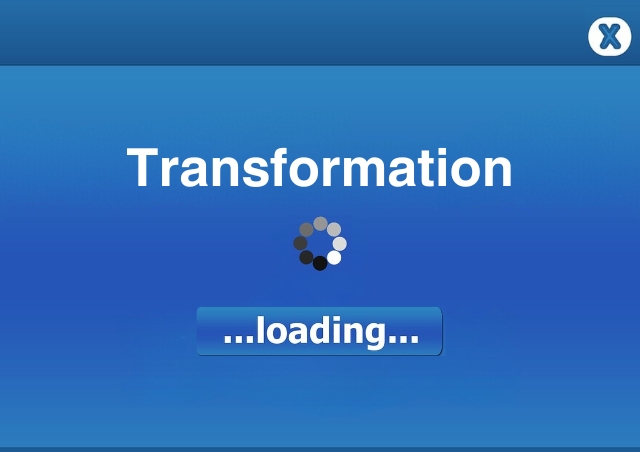“The only constant is change” – Heraclitus.
Although this interpretation of Heraclitus’ philosophical ideas pertains to the period between 535-475 BC, it still relates significantly to the concept of transformations.
In today’s fast-paced world, where we are experiencing rapid technological advancements, changes in market dynamics, and higher customer expectations, the need for organisations to constantly change has become more crucial than ever. Although many organisations acknowledge that their traditional way of working needs to change, few succeed. According to John Kotter, just 30% of change projects were successful, a figure which was recently supported by other studies.
The Different types of Transformations
Transformations can take different shapes and forms, including:
- Strategic Transformations – where organisations embark on a journey to change their overall objectives and market positioning to respond to changes in the competitive landscape.
- Operational Transformation – involves reengineering different processes, ensuring they are as lean and value-add as possible.
- Digital Transformations. In these transformations, the focus is to integrate digital technologies into everything the organisation does. Usually, these organisations try adopting a “Customer-Centric” approach where they focus on becoming as dynamic as possible to respond to the evolving need of the customers.
It is worth noting that Digital Transformations are not all about the use of technology but also about communication and the human factor.
Why do transformations fail?
The root causes for failed transformations are several, but I like attributing these to four main areas:
Vision, Strategy, and Communication
A clear, well-defined strategy and vision of where the organisation aspires to be for the following years is critical before embarking on a Transformation Journey.
Transformation necessitates the collaboration of all members of the organisation, therefore, ensuring that everyone understands the need for change is critical to its success. Employees must feel involved and heard to boost overall engagement. They should ideally be given the opportunity to contribute during the strategy creation process to build a shared vision.
Ignoring data and feedback can result in a strategy that is not aligned with the actual needs. This makes it critical for organisations to give weight to the Voice of the Customer (VoC) and the Voice of the Employee (VoE) during the Strategy formulation process and before embarking on a transformation journey.
Culture
“Culture isn’t just one aspect of the game. It is the game.” – Louis V. Gerstner, JR.
Transformations are all about change, and an organisation cannot change unless its people change. The disconnect between the current and future culture coupled with personal interests creates complex roadblocks throughout the transformation journey, giving rise to conflicts and low employee engagement.
For transformations to succeed, there needs to be strong, visible, and active support from the leadership team. Moving out of one’s comfort zone is not easy, and employees need to feel that they are not alone in this challenging journey.
Talent
Most of the time, the talent required for organisations to move to a new state differs from what already exists. Linking this with culture, the leadership team must embrace the reality that the way they did things might not apply to this modern era. With the lack of expertise within the organisation, the need to engage, support, and most importantly, empower specialised people is critical to the success of the transformation.
In this context, the organisation must allocate sufficient funds to hire new talent and be willing to offer attractive and competitive salaries. However, this should not be just a matter of numbers – organisations must be willing to listen and act on new perspectives, as these people often challenge the existing status quo.
Speed of Change
I have experienced this problem on both sides of the spectrum, with some organisations purposefully taking a ‘slow-motion’ transformation and others attempting to transform in a matter of months.
Both approaches are detrimental to the success of the transformation. In slow-paced transformations, people become disengaged and lose appreciation for change. Resistance to change will continue to grow while those with self-interest in preventing the change will have plenty of time to build their case.
On the other hand, trying to implement a transformation too fast will overwhelm the organisation, leading to failure. If the organisation is not yet prepared to change, all set goals and timelines will be perceived as overambitious, pushing people to a disengaged state. Furthermore, adopting a very fast-paced transformation approach generally results in high context switching, significantly impacting productivity, including the quality of the work produced.
Before deciding the speed by which the organisation would like to pursue the transformation journey, the leadership team needs to assess the organisational readiness. Some key questions that need to be genuinely answered include:
- Have we engaged enough people to help us implement the transformation initiatives?
- Do we have the proper skill set to support us in this journey?
- What training do we need to give our existing staff to support them in this journey?
- Is our technological state robust enough to take onboard the new initiatives, or do we need to invest in fundamental changes? (This is especially important for Digital Transformations)
- Are people ready to share information and collaborate?
- Are people convinced about the need for change?
Regularly assessing the organisational readiness and communicating the overall progress of the transformation play a crucial role in managing stakeholder expectations. This reduces frustrations and allows challenges to be promptly addressed, leading to a smoother transition and a collaborative environment.
Why do we need to be Agile?
The misconception that agile is a silver bullet for all kinds of problems is common across different organisations and industries, particularly those who have not been exposed to the Agile way of working. As organisations start embarking on transformation journeys, they quickly begin using agile tools and agile terminologies, hoping to be successful in their transformation journey.
However, Agile is not about tools and terminologies but about mindset that complements the essence of change.
At its core, the Agile mindset champions flexibility, transparency, collaboration, customer centricity, and iterative delivery. To truly become Agile, organisations must be prepared to make some fundamental changes, for example:
- Empower its people to make decisions that have been traditionally made by senior leadership only.
- Be ready to move away from the traditional fixed long-term project scope and deliver projects in small chunks, constantly seeking feedback from its customers and adjusting the scope accordingly. Consequently, this also impacts how budgets are traditionally allocated to the different projects.
- Organise itself around value by creating what is called ‘Value Streams’.
I will delve into more detail about value streams in future blog posts. At this point, it is worth noting that this transition might necessitate significant changes, including the overall organisational structure and shifting from a project to a product delivery approach. For the sake of simplicity, I will keep using the term projects in this post.
More information about the Agile principles and core values can be found here. The key message here is the appreciation that the use of tools and methodologies such as Kanban, Scrum, and DevOps are there primarily to facilitate collaboration while ensuring continuous improvement. They are not there to replace the Agile mindset, which is a crucial factor for transformations to be successful.
While “Transformation” encompasses a wide range of changes, some of them have been discussed in this blog, the fact remains that the role of humans plays a central role in the success (or lack thereof) of transformations. The Agile mindset addresses several human-related issues organisations face during their transformation journey. By marrying these two factors, organisations create an environment where people are more likely to react positively to the transformation journey.
I hope you found this article interesting. Stay tuned for much more!
As the objective of this post is to offer newcomers in the field of Agile a foundational understanding, I have intentionally simplified certain aspects of the content. If you seek more comprehensive and precise information, please don’t hesitate to reach out.
I’m Jonathan Spiteri, and I bring a wealth of experience in innovation, strategy, agile methodologies, and project portfolio management. Throughout my career, I’ve had the privilege of working with diverse teams and organisations, helping them navigate the ever-evolving landscape of business and technology. I’ve also earned multiple prestigious certifications, such as Axelos Portfolio Director, SAFe® 6 Practice Consultant, Organisation Transformation, Project Management Professional (PMP), TOGAF 9.2, and Six Sigma Black Belt. These qualifications reflect my dedication to achieving excellence and my proficiency across various domains.


